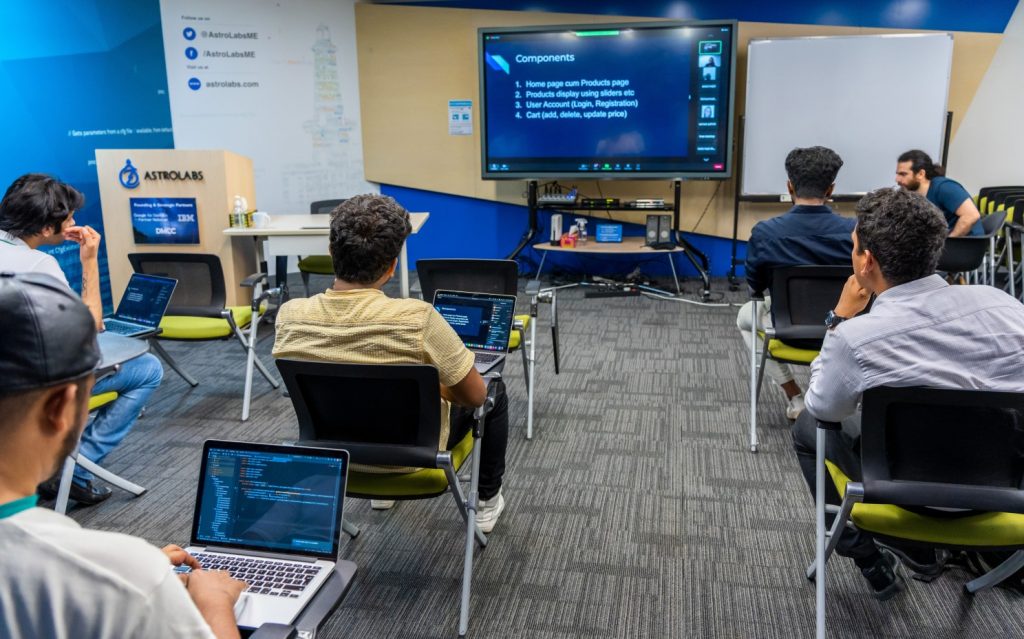The SME sector remains one of the most critical backbones of the global economy, where 9 out of 10 businesses around the world consist of small and medium-sized enterprises, employing 50% of the global workforce. While the market size alone establishes SMEs as a core pillar of any business ecosystem, enabling the full qualitative and quantitative impact of the sector can critically accelerate sustainable technological and economic growth.
The SME sector in emerging markets has been contributing a 40% share of total GDP, proving to be an integral financial driver for the economy; this contribution is fairly higher when considering informal SMEs as well. While the MENA region lingers on the lower end of that contribution (35%-40% of yearly GDP) the need to boost the SME sector has become certain.
Although major plans for SME development had already been set in motion, the unprecedented trial of the global pandemic was a grave inflection point for businesses across the region. With shocks on running operations across all industries, especially in consumer-facing ones such as retail and F&B, businesses raced to digitize their offering as means of maintaining customer channels.
While this market shift was sparked by a tactic of survival, it not only accelerated the growth of digital industries pioneering data & technology-driven solutions but also emerged with extensive insight into the digital readiness of the SME ecosystem. While retail adapted to e-retail and F&B to food delivery and cloud kitchen, here are some of the digital challenges & opportunities for MENA-based SMEs in the post-pandemic era:
The latest on the ecosystem straight to your mail. Sign Up for our Newsletter
MENA’s Tech Talent & Digital Readiness
The SME sector showed great business acumen in quickly adapting to the new shift in dynamics. This translated in many ways including the investment in and adoption of digital technologies and the integration of digital servicing into their offering. In a survey of 5,500+ businesses across MENA, the MENA Monitor reveals that 49% of all surveyed SMEs had invested in digital technologies in response to the pandemic.

This has given a vigorous boost to businesses with a native digital edge across the region, where we saw investment peaks and inclined growth of industries such as e-commerce, fintech, transport & logistics, and last-mile delivery. While we saw increased participation in digital markets over the past two years, many SMEs were hindered by a slow digital transformation which took a great hit on their revenue streams and caused many to close up shop.
The key for SMEs over the upcoming stage, and a pivotal learning during the trial of the pandemic, is in driving digital growth to meet burgeoning market demand- here, the conductive elements for digitization remain large at play. One critical challenge for SMEs in MENA is the readiness and availability of local tech talent. According to PWC, only 1.7% of the GCC workforce have digital jobs compared to 5.7% in developed markets.
This proves an exciting challenge and opportunity for the local SME sector. On one end, more local B2B SaaS players are pulling their weight- last week we hosted AI-powered data analytics solutions provider Nybl which underwent its own data transformation over the past year to integrate data-driven technologies into all kinds of businesses in MENA. On the other, the gaps in Digital Technologies in MENA invited regional and global players to double down on entering the market, building a competitive environment needed to spur innovation.
Government players are also backing the talent skill gap in holistic business acceleration, job creation, and open innovation plays. With private/public-backed SME enablers such as the Dubai SME in the UAE, Munsha’at in KSA, and QDB in Qatar- the full-fledged digital acceleration of the SME sector is already on its way. This has also invited Saudi Vision 2030 projects such as Al Ula, working to digitize and invigorate its critical sectors, to introduce comprehensive programs for SME enablement, which remains one of the most anticipated programs our teams have been engineering and running over the past year.
Digital Disruption of Financing and Beyond
The main challenge for SMEs across the globe is the lack of access to financing, which pushes setbacks on operational capacities and capital resources. This stops SMEs from unlocking their full growth potential or scaling at the pace of the market. In MENA, the gap between the financing need and availability of capital in the market for SMEs goes up to 88%, this fairs high compared to peer emerging markets including East and Pacific (46%) or Latin America and the Caribbean (23%).
Once again, the weight of the challenge gave rise to digital solutions and opportunities for growth in the MENA market. Particularly, we have seen the rise of technology-enabled micro-crediting and open finance players emerging and even B2B e-commerce players offering data-driven fintech solutions to stimulate supplier/buyer trading. The next generation of emerging businesses is pushing for financial inclusion in MENA, this translates to greater access to common financial pools for SMEs driven by technologies that can solve the insolvency risk challenges.
The Digital Way Forward for MENA
The major thematic for the business ecosystem in MENA and across emerging markets is being able to achieve economies of scale. This means not only meeting local demand but also being able to expand beyond borders. The odds are now in favor of such scale-ups given the maturity of the ecosystem and more importantly its newfound digital drive. Yet, this also means a honed focus should be on opening up and building the right digital infrastructure to nurture cross-border expansion.
Surely, this includes investment in and integration of big data analytics, financial data profiling, and API integration amongst many technologies to build fully integrated digital ecosystems. The digital transformation of the ecosystem should be a multipronged approach that also focuses on upskilling local talent and accelerating the digital transformation of SMEs to meet the projected growth demand.
Promising growth projections are inviting governments and GREs in MENA to double down on SME investment. However, it is their pivotal role in economic diversification and driving nationwide digital transformations that put the sector on every private/public development mandate across the region.

